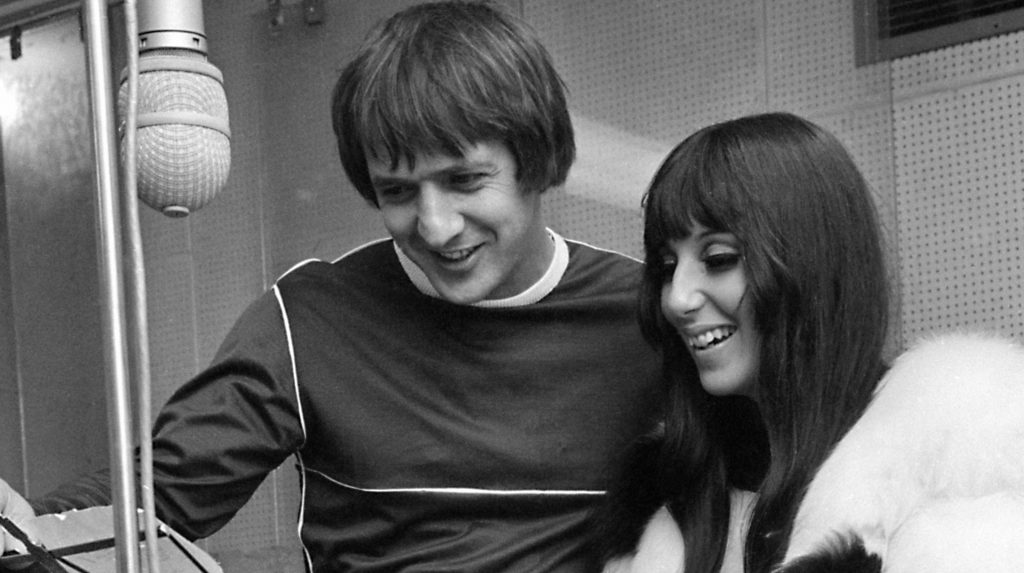
The Timeless Rhythm of Life
In the ever-evolving tapestry of music, few songs manage to capture the essence of an era quite like “The Beat Goes On” by the iconic duo Sonny & Cher. Released in 1967, this track is not just a song; it’s an anthem that encapsulates the relentless passage of time and the enduring spirit of human resilience. As listeners, we’re drawn into a rhythmic journey that echoes both the constancy of life and the subtle changes that define it.
Upon its release, “The Beat Goes On” quickly resonated with audiences, securing a respectable position on the Billboard Hot 100 chart where it peaked at number 6. This success was a testament to its universal appeal and the profound connection it forged with listeners, both young and old. During a time marked by social upheaval and transformation, Sonny & Cher provided a musical anchor—a reminder that amidst chaos, life indeed continues.
The story behind “The Beat Goes On” is as compelling as its melody. Written by songwriter Sonny Bono, who was one half of the duo alongside his then-wife Cher, the song reflects Bono’s astute observations of societal shifts during the 1960s. This was a period characterized by rapid change—politically, culturally, and socially. Bono’s lyrics capture these transformations with poignant simplicity, painting a picture of a world in flux yet grounded by an unchanging beat.
At its core, “The Beat Goes On” is a reflection on continuity amidst change. The repetitive bassline and steady drumbeat mimic the heartbeat of life itself—a constant rhythm that persists regardless of external circumstances. Through lines like “Drums keep pounding a rhythm to the brain,” Bono articulates an enduring truth: while styles may shift and trends may fade, life’s fundamental rhythm remains unchanged. This message resonates deeply with older listeners, who have witnessed decades of change and can attest to life’s cyclical nature.
For many, listening to “The Beat Goes On” evokes a sense of nostalgia—a bittersweet reminder of days gone by and the relentless march of time. It’s a song that invites reflection, urging listeners to ponder their own journeys and the changes they’ve witnessed. Its timeless quality lies in its ability to evoke personal memories while simultaneously speaking to broader historical moments.
Beyond its lyrical depth, the song’s instrumentation plays a crucial role in conveying its themes. The arrangement is simple yet effective, allowing Cher’s distinctive contralto voice to take center stage. Her delivery is both commanding and soothing, guiding listeners through the song’s narrative with grace and assurance. Meanwhile, Sonny’s harmony adds texture and depth, creating a harmonious blend that underscores their unique musical chemistry.
“The Beat Goes On” also holds a special place in the legacy of Sonny & Cher. It represents a peak in their career—a moment when their talents converged to create something truly memorable. For older fans who followed their journey from humble beginnings to stardom, this song serves as a reminder of their enduring impact on popular music.
In conclusion, “The Beat Goes On” is more than just a hit from the past; it’s a timeless reflection on life’s unending rhythm. Its message is as relevant today as it was over five decades ago—a comforting reminder that despite life’s unpredictability, some things remain constant. For those who lived through its initial release, it’s an echo of youthful days filled with promise and change. And for new listeners discovering it today, it’s an invitation to reflect on their own place within life’s ongoing beat.
Whether you’re revisiting this classic or hearing it for the first time, “The Beat Goes On” offers an opportunity for introspection and appreciation—a chance to remember that while everything around us may shift, our shared human experience endures through time’s relentless march.